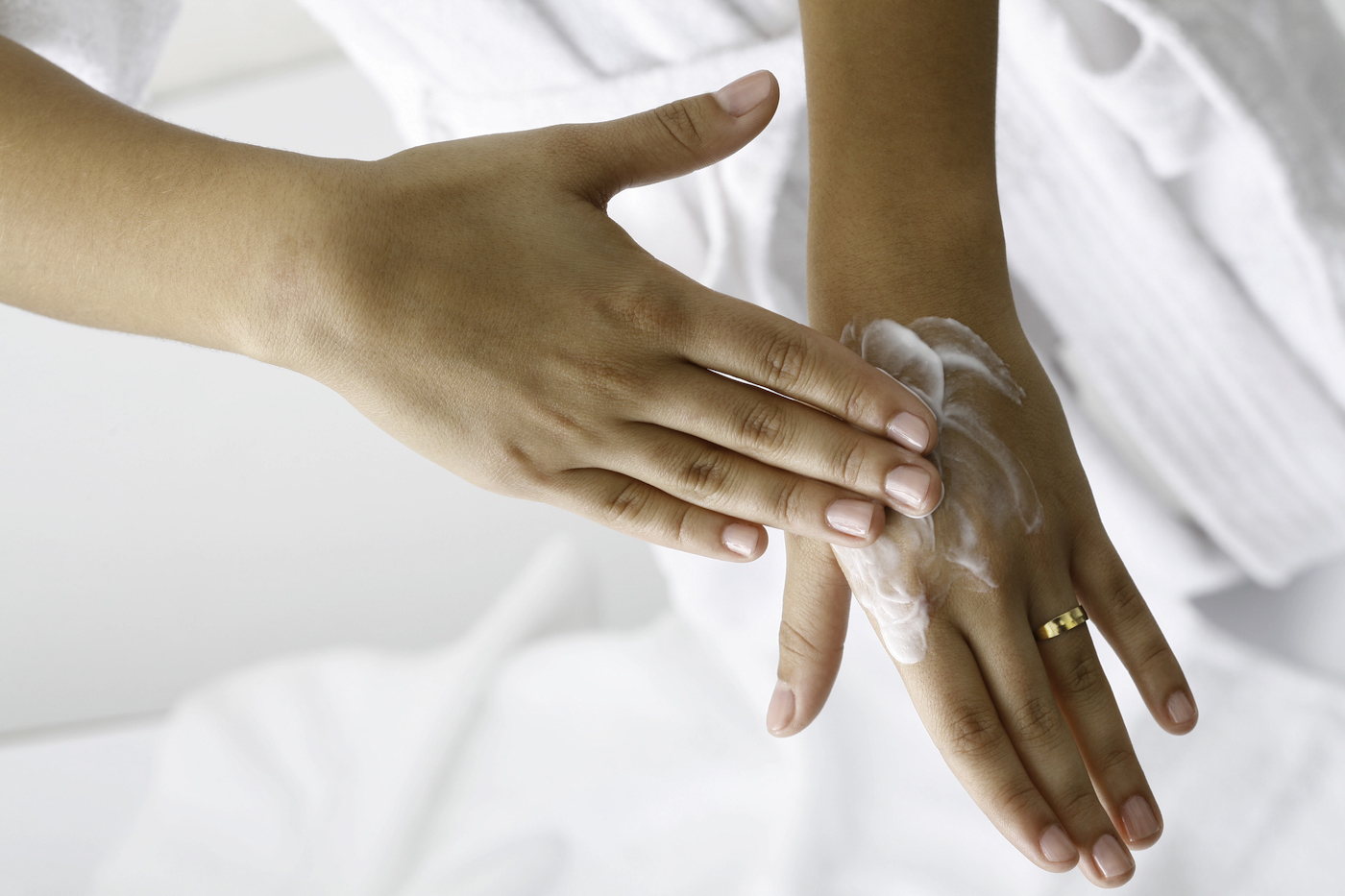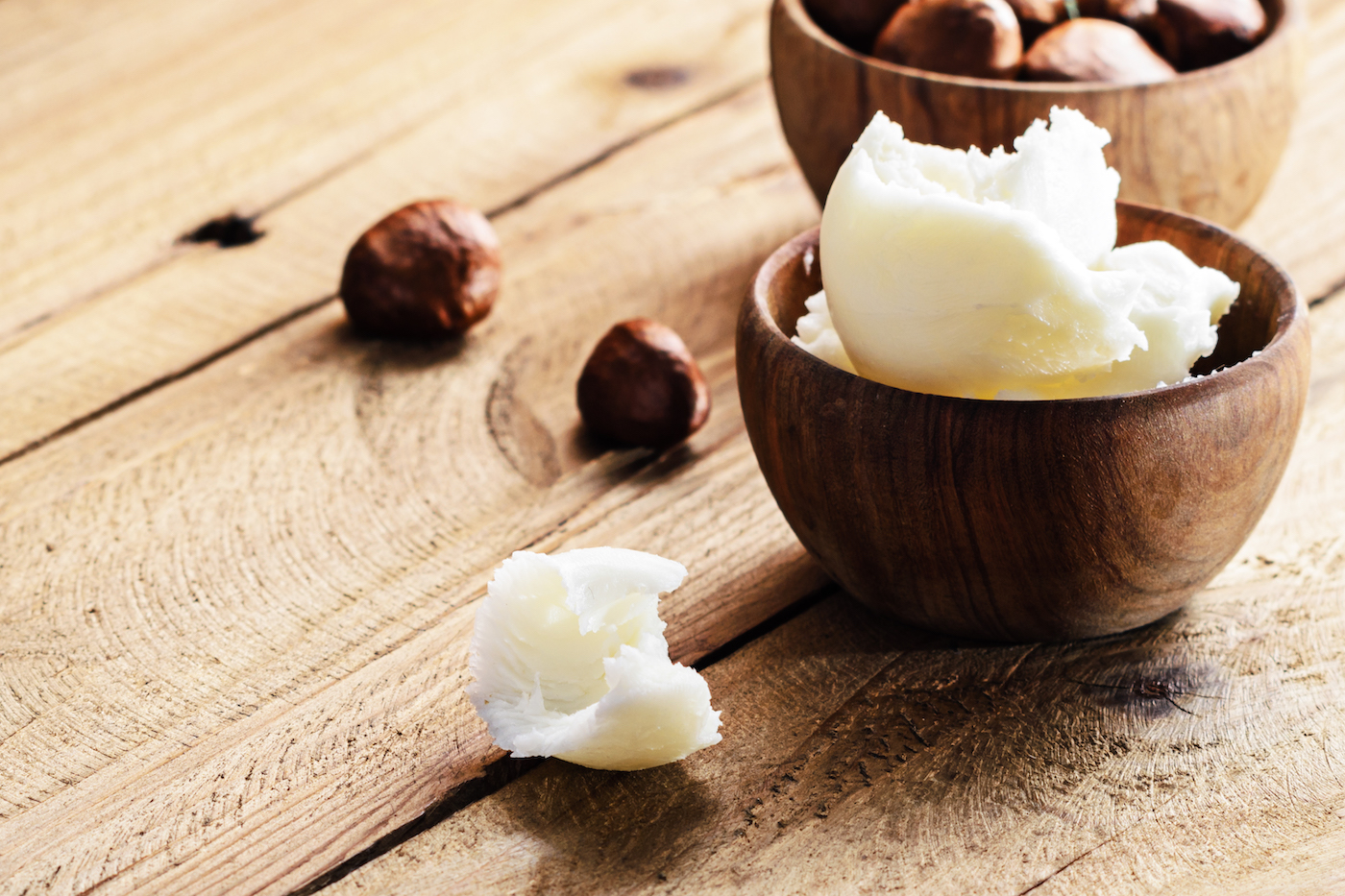
February 12, 2020 at 03:00AM by CWC
Shea butter has been a go-to in many beauty regimens—especially when it comes to pregnancy and mitigating stretch marks. That’s because besides being super moisturizing, while also providing many other noteworthy benefits.
“Shea butter comes from the nuts of the shea tree, which is native to Central Africa,” says Dr. Josh Axe, DNM, author of the best-selling book Collagen Diet and host of The Dr. Axe Show. “The outer shells of the nuts are removed. Then they’re crushed and slowly roasted into butter. Finally, the butter is commonly kneaded by hand in a basin of water to separate the fatty acids. These fatty acids, or oils, are removed from the butter, cooled, and hardened to make what we know to be shea butter.”
Shea butter is perfectly safe to use for most skin types, adds Dr. Sonia Batra, MD, co-host of daytime show The Doctors, and it has been used in cosmetics for centuries due to vitamins and fatty acids that hydrate and calm the skin.
Intrigued? Keep reading to learn about its many other benefits and possible side effects, as well as pro tips on how to use it.

The benefits of shea butter
1. Shea butter moisturizes skin and hair
If you have dry, dull skin, shea butter may become your new best friend. “Shea butter works as a skin-conditioning agent,” Dr. Axe says. “It helps retain moisture by forming a protective barrier on the skin’s surface, which reduces the loss of water and keeps your skin hydrated.”
Some experts say that shea butter is even better for your skin than coconut oil (yes, really). Joshua Ross, celebrity aesthetician of SkinLab, recommends opting for facial oils or other natural products made with seed-derived oil, such as shea butter. Oils from the flesh of a fruit, such as coconut oil, can be very occlusive (or clogging). “The skin is always going to respond better to seed oils because they mimic the oils naturally found in the skin,” he says.
Shea butter moisturizes hair, too. By conditioning the scalp, it can also reduce dandruff, and it can make hair stronger and help prevent future breakage.
2. Shea butter is good for sensitive skin
If you have sensitive skin, consider ditching the fancy lotions and potions—which may be making your skin even more irritated—and reach for shea butter instead. “When you have skin irritation, natural ingredients that are proven effective are always best, making shea butter a very reliable choice,” Ross says.
3. Shea butter is soothing
Thanks to the fact that it contains both vitamins E and A, shea butter is also beneficial in treating irritated skin, sensitive or not. Dr. Axe recommends using it to soothe windburn, dry patches, sunburn, abrasions, and even diaper rashes on babies (also due to its antifungal and antibacterial properties). You can also apply to scars to minimize their appearance.
4. Shea butter eases inflammation
If you struggle with chronic skin conditions like eczema, rosacea, and psoriasis, the fatty acids in shea butter will help ease inflammation. “Shea butter slows the production of inflammatory cells that contribute to irritation and skin conditions,” Dr. Axe says.
And because shea butter penetrates the skin quickly, you’ll feel relief sooner rather than later. One study showed that shea butter could be equally as effective at treating eczema as medicated creams, so it’s worth checking out.
5. Shea butter makes you look younger
The vitamin A and E in shea butter can do more than soothe skin. They can also make you appear more youthful, and who doesn’t want that? “Shea butter also helps promote cell regeneration, which can reduce the appearance of fine lines and wrinkles,” Dr. Batra says.
Ross adds that shea butter also has antioxidant properties that help neutralize free radical damage from sun exposure. It’s also said to help boost collagen production, which gives the skin its plump look.
“Shea butter also helps promote cell regeneration, which can reduce the appearance of fine lines and wrinkles.”—Dr. Batra
Side effects of shea butter
Contrary to the rumors out there, shea butter won’t clog your pores. “It’s not known to clog pores because the fatty acids mimic the sebum or oil that we produce naturally,” Dr. Axe says. “This actually reduces the production of sebum and helps to maintain the health of your skin.” So, shea butter won’t leave your skin looking greasy in case you were worried.
Although it is generally safe to use for most people, if you have a nut allergy, shea butter may not be the best idea. “People with tree nut allergies may experience adverse reactions to shea butter because it comes from the nuts of the shea tree,” Dr. Axe says.
ADVERTISEMENT
ADVERTISEMENTSports Direct Free Delivery on All Orders! |
On the other hand, Dr. Batra says that there are no documented cases of topical shea butter allergies. So if you want to give it a whirl, Dr. Axe recommends applying a small amount to a tiny area of skin to see if there’s a reaction. And, if there is a reaction, discontinue use asap and visit your doctor or dermatologist.
How to use shea butter
1. Use it as a full-body moisturizer
Slathering yourself in shea butter as you would with a full-body moisturizer is one of its most common uses, Ross says, especially during the winter months when skin tends to be its driest. Rub until it’s fully absorbed. For the face, it may be best to use at night as it can be tricky to apply makeup over it. Wherever you’re applying it though, remember a little goes a long way.
2. Put it on the ends of your hair
If your hair is looking lackluster, you can use shea butter to bring it back to life, but there’s a caveat. “If you have thin hair, avoid the roots, as it can cause an oily-looking buildup,” Dr. Batra says.
Instead, Ross suggests adding it to only the ends of your hair, which can help prevent split ends. Use it as you would a conditioner and rinse it out in the shower. Or, add a tiny bit as a leave-in conditioner.
3. Warm it up in your hands
Like coconut oil, shea butter can become solid. So, before applying it, Dr. Batra recommends rubbing it in your hands for a few seconds to warm it up and make it easier to spread.
4. Opt for pure, unrefined shea butter
Many skincare products and cosmetics already include shea butter as an ingredient, but it tends to be highly processed, reducing its all-natural properties. So, to reap its full benefits, raw shea butter is the way to go.
The quality of the shea butter also matters. They’re not all created equally. “You want to use a pure, unrefined shea butter that has a nutty aroma and beige color,” Dr. Axe says. “If the product is ‘refined,’ that means that it’s been chemically altered, and the properties found in pure shea butter are diminished.”
This $6 drugstore “body conditioner” could be your skin’s new BFF. Plus, if you have dry skin these are the products you should be using in the shower.
Author Jessica Estrada | Well and Good
Selected by CWC

ADVERTISEMENT
ADVERTISEMENTUp to 30% off Gift Sets |








